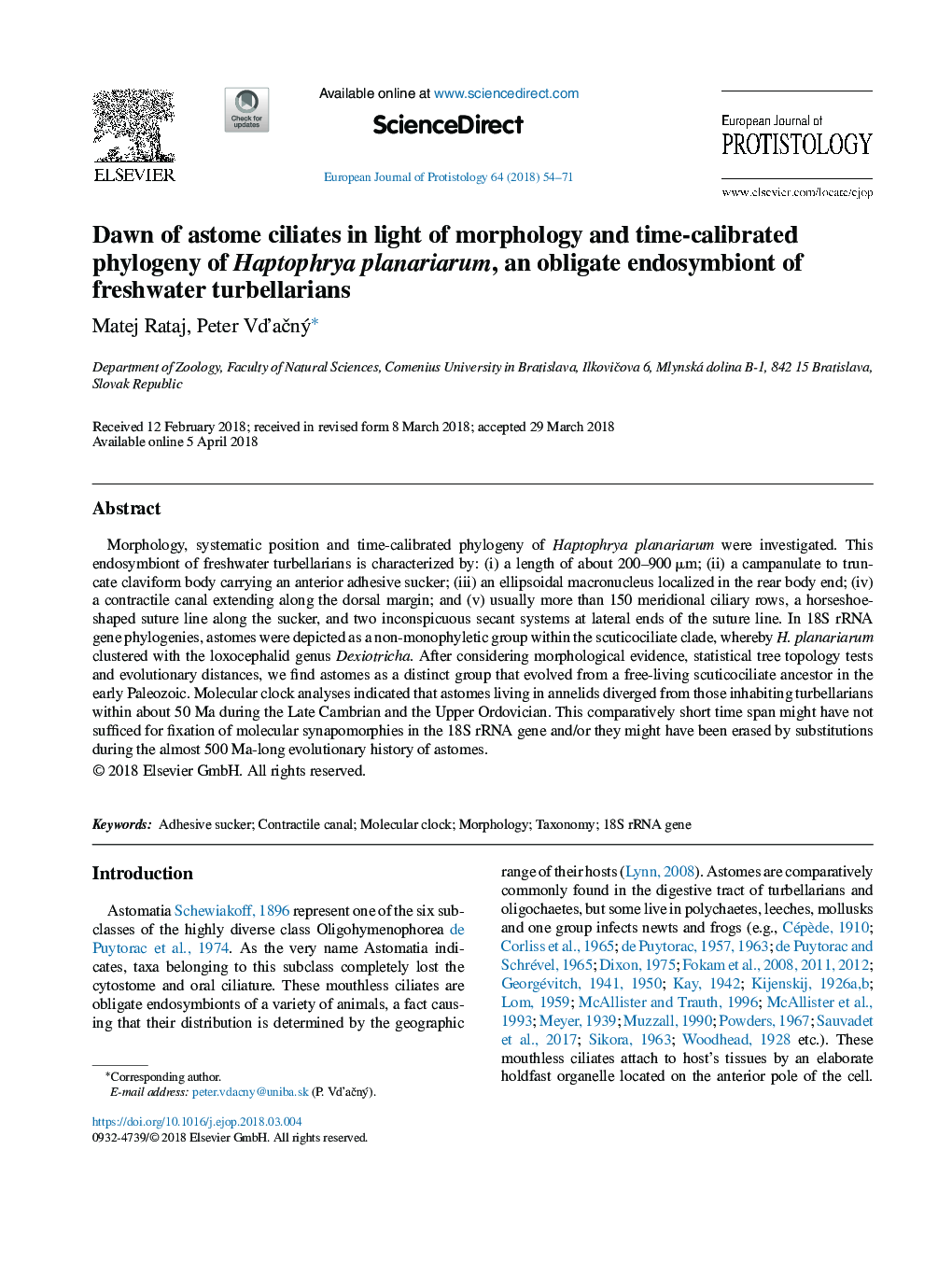| Article ID | Journal | Published Year | Pages | File Type |
|---|---|---|---|---|
| 8382429 | European Journal of Protistology | 2018 | 18 Pages |
Abstract
Morphology, systematic position and time-calibrated phylogeny of Haptophrya planariarum were investigated. This endosymbiont of freshwater turbellarians is characterized by: (i) a length of about 200-900â¯Î¼m; (ii) a campanulate to truncate claviform body carrying an anterior adhesive sucker; (iii) an ellipsoidal macronucleus localized in the rear body end; (iv) a contractile canal extending along the dorsal margin; and (v) usually more than 150 meridional ciliary rows, a horseshoe-shaped suture line along the sucker, and two inconspicuous secant systems at lateral ends of the suture line. In 18S rRNA gene phylogenies, astomes were depicted as a non-monophyletic group within the scuticociliate clade, whereby H. planariarum clustered with the loxocephalid genus Dexiotricha. After considering morphological evidence, statistical tree topology tests and evolutionary distances, we find astomes as a distinct group that evolved from a free-living scuticociliate ancestor in the early Paleozoic. Molecular clock analyses indicated that astomes living in annelids diverged from those inhabiting turbellarians within about 50 Ma during the Late Cambrian and the Upper Ordovician. This comparatively short time span might have not sufficed for fixation of molecular synapomorphies in the 18S rRNA gene and/or they might have been erased by substitutions during the almost 500 Ma-long evolutionary history of astomes.
Related Topics
Life Sciences
Agricultural and Biological Sciences
Agricultural and Biological Sciences (General)
Authors
Matej Rataj, Peter VÄaÄný,
